SECOND PROTOTYPE 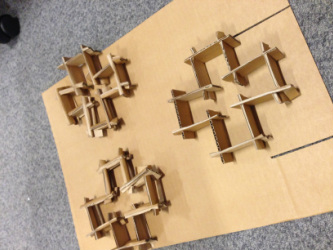 Within our initial sketch designs we explored the idea of using
circles rather than rectangles for the leg supports, so we wanted to examine this through our second prototype. While changing the core design it also allowed us to explore various changes to elements.
The base of the design was simply three circles, the centre where the user sits and the sides acting as the leg supports. During our development we explored a variety of supports for the base (seen on the left) but after testing we discovered the crosshatched shape stability failed.
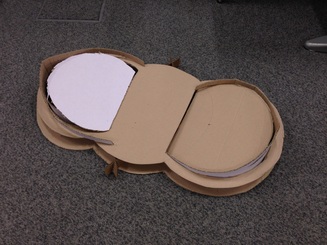 We found the simple ‘waffle’ crosshatch holds the structure
together without compromising the core function of the chair. This method also allowed us to measure it to the base so we did not waste any cardboard unnecessarily.
Each leg support sat within a semi-circular frame that locked it
in place. Although initially effective, upon testing the structure began to give way. The second prototype was designed to give the impression that it was one piece, however the leg supports suffered because of this. One reason was because the height of the supports were too shallow, also we did not take into account the distance from the knees to the lower back.
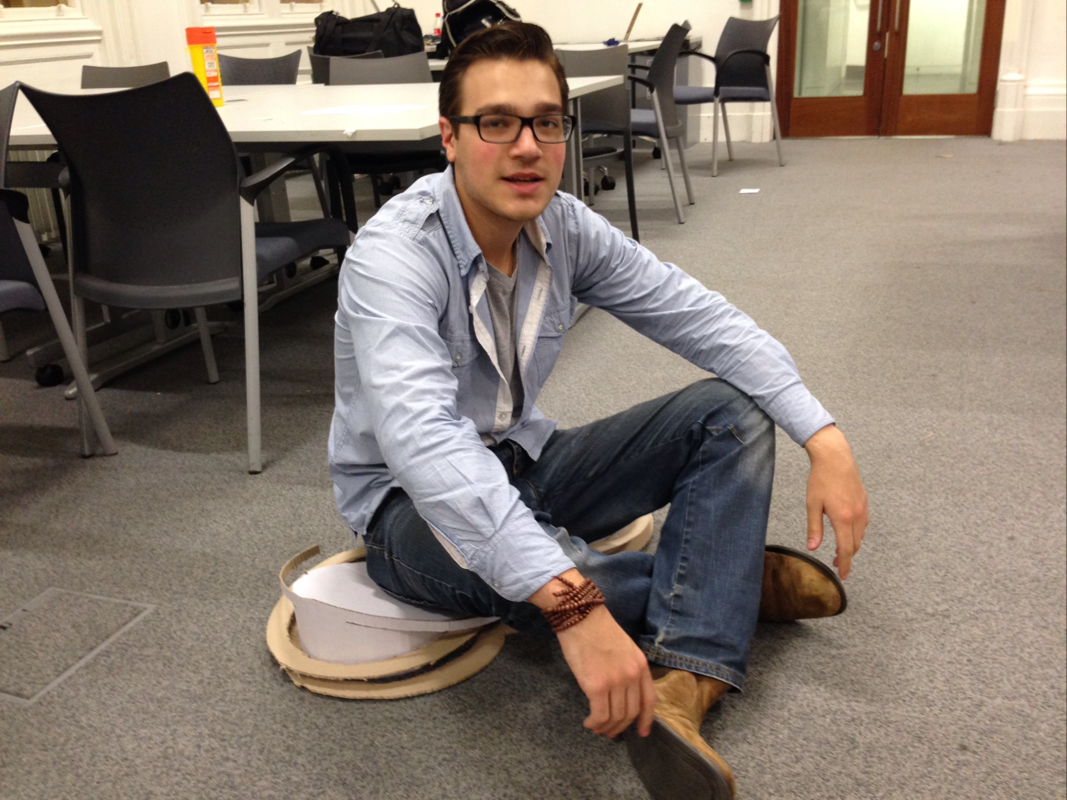
Josh testing Thinking Chair Mk II
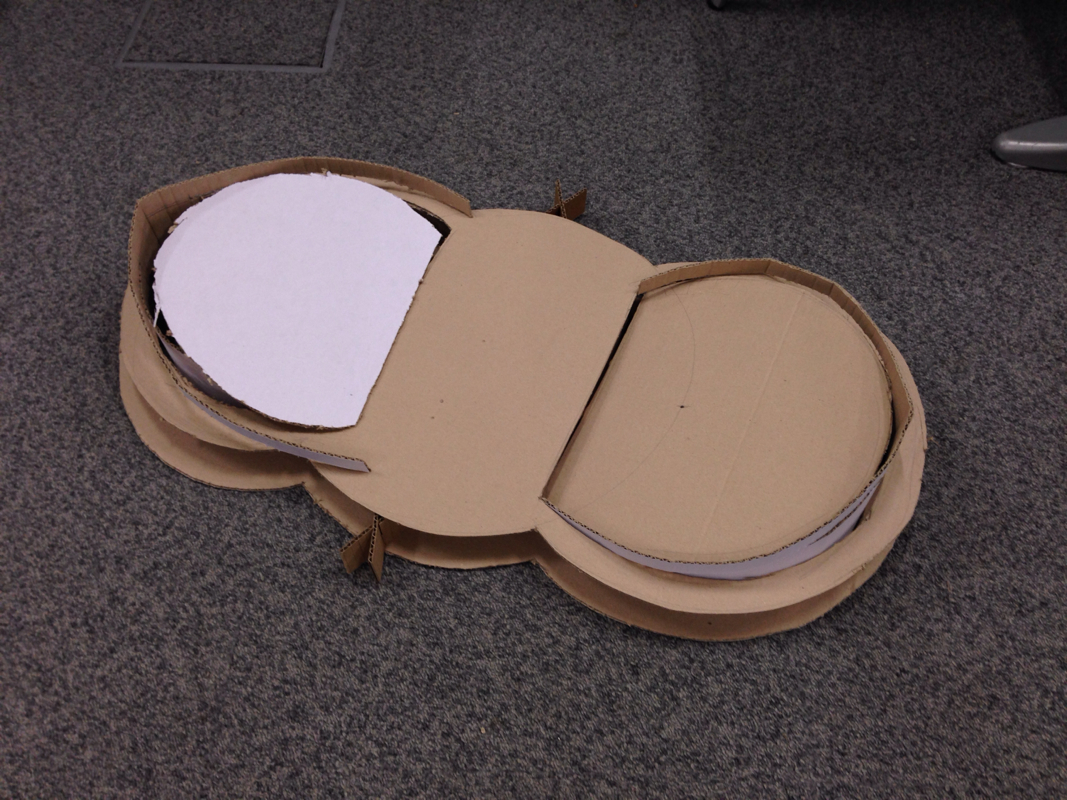
The complete Mark II Prototype
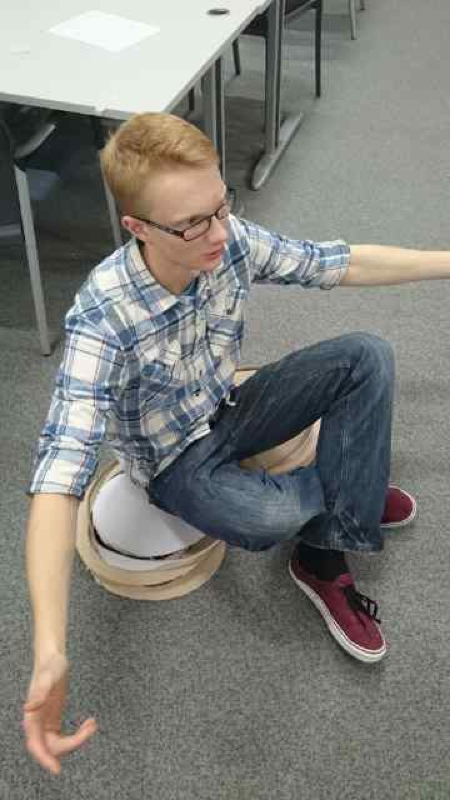
Testing the Mk II
FIRST PROTOTYPE 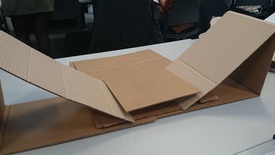 Once we established our idea of a creating a ‘thinking’ chair we
needed to explore how the design would encourage this. After researching various positions, from improved back posture to meditation, we found when an individual sits crossed legged, this straightens the back which enhances a part of the brain that improves concentration.
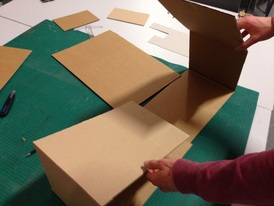 On our first prototype model we raised two sections to a 45
degree angle which causes the user to cross their legs while seated. Although we wanted a clear separation between where the user sits and where the legs rest, we found when trying to combine these using a simple interlocking method with the cardboard, the structure overall weakens. The structural stability is vital on the leg supports, so that the core principal of the design works. So separating the elements would allow for stronger supports on each of the essential sections.
| We had come up with a number of designs incorporating various methods of sitting positions, and back support. Some we designed had a triangular shaped backrest that reached the top of the back. Another had a triangular-cuboid shaped laying down, which would support the person's lower to mid-back section.
We had also come up with multiple ways of using structural supports. We contemplated using: A cross-hatched shape and a hexagon shape. Our inspiration for designing a hexagon shaped support came from the structural building strategies of bees. We made small models of these designs to gain a better perspective of what it may look like in full size. | |
We had experimented using a cross hatched "waffle" shaped structural support, sandwiched between the seats of the chair. It proved to be a very stable shape and is effective in holdings an average human's weight. However, the only issue about this shape is the tendency for it to shift and slide from under.
We needed a particular shape with a strong structure that will hold, and maintain the weight of a persons leg for long periods of time. Our answer to this was to create a triangular frame with multiple single rectangular panels that slot into them. We believed this to be an effective method of holding weight as we tested it numerous times.
WE STARTED MIND MAPPING OUR IDEAS STRAIGHT AWAY. We started mind mapping straight away. We thought a lot about aspects such as the timescale of the chair's use, the idea of forcing a pose and most key of all, the function that i should ultimately possess.
With only 1 single sheet of A0 cardboard allowed to make the final design, it became instantly clear to us that this task required the attitude of form following function. There will simply not be enough material to create a structurally sound product if we focus on the aesthetics as our primary aspiration.
So the product must perform a function. Yet there are so many chairs on the market already which possess the same key selling point - comfort. Then there other types of chairs which claim to have a 'unique' selling point, perhaps being perfect for gaming, or reclining. But then an idea came forwards. We kept thinking through all these ideas but nothing was striking us as perfect, perhaps what we needed was a 'thinking chair'. | | This is something which echoes back to our time in the library earlier on. The decision to do a 'thinking chair' would allow us to progress forwards with a unique idea which has a clear place in our surroundings, and which would fill what we believe to be an obvious gap in the market.
AS WELL AS FIRST HAND RESEARCH, IT CAN BE IMPORTANT TO LOOK AT EXAMPLES FROM DESIGNERS TOO. THESE ARN'T ALWAYS COMMONLY FOUND DESIGNS, OFTEN BESPOKE AND SOMETIMES PURELY CONCEPTUAL. SUCH DESIGNS CAN BE VERY INFORMATIVE AND USEFUL. Thomas Heatherwick The image below shows Thomas Heatherwick in his chair 'Spun'. 'Spun' is a unique design unlike any other. It is very much similar to the design of a spinning top. The original goal for this design was to create an ergonomic design in which the back of the chair could also be the seat. In the quest for finding a solution to this concept, the studio ended up finding a completely different use for the chair. | The Youtube video to the right shows a clip of the 'Spun' chair in action during an interview. It has a secondary function of allowing the user to swivel around and play with the chair. Amazingly, the studio claims that it will not topple no matter how much you spin around on it. However, they also remembered that at a fundamental level, the chair is still a chair. Not only that, but they hung onto wanting to make it ergonomic.
This is an interesting design with an unusual form. There is a lot to be gained from it's inspiration. | |
WHAT IF THE SPACES WE LIVED WITHIN HAD NO FURNITURE, AND THE SURFACES THAT SURROUND US ARE INSTEAD THERE TO ACCOMPLISH A FUNCTION?
DECKSTOOL created by Dosuno Design is a remarkable design which strides to create function from simplicity. The concept of this 'chair' was to create furniture that when not in use would simply integrate into its surroundings. Furniture can dominate the spaces they inhabit, so the idea of empty space such as the floors and walls transforming into seating creates unique possibilities. The use of sustainable materials further establishes the need for less furniture and so fewer resources, which is crucial in this ever growing manufacturing era.
| Although elementary in its design, its advantages are intriguing and if used correctly its potential in modern living are fascinating.
| |
WHEN DESIGNING A PRODUCT, IT IS IMPORTANT TO UNDERSTAND THE EXISTING MARKET. WHY MAKE A PRODUCT THAT GETS LOST AMONGST THE REST OF THE WORLD? THAT DOES NOT MEET A NECESSARY NEED? | | One of the first things we did was to go out into the world around us and look at existing examples of chairs.
We went around the university, library, and student union to take some photos of existing chairs. Both the library and the student union have been very recently filled with a large variety of brand new furniture, so we knew that there was going to be a lot of opportunity for first hand research in these areas.
We found a wide range of chairs all with different features, from brightly coloured patterns to included mini desks. Yet what seemed to strike us was that not all of these chairs fully fit their purpose. The agreed opinion of the chairs in the library for example, was that they had been chosen because they looked modern, and hence in keeping with the refurbishment of the building.
Despite the library fundamentally being a place for thinking, we only found one, maybe two examples of a chair designed to encourage the process of thought. We felt like we had hit on something here. | Below is a gallery featuring photos taken of chairs on our trip around the buildings.
| We acquired the knowledge that strategic sitting positions
like meditation, can in fact straighten the back and therefore increase thinking and concentration. Traditionally, meditation was a religious practice with the objective of altering ones everyday consciousness to reach a state of receptiveness. The traditional and most well known meditative posture involves sitting in a
cross-legged position on the floor or a cushion with an awareness of the bodily position. Meditation yields a surprising number of health benefits, including stress reduction, improved attention, better memory, and even increased creativity and feelings of compassion.
| | EFFECTS ON THE BRAIN
It has only been in recent times that neuroscientists have been able to peer directly into the brain to see what’s going on. The advent of fMRIs and other brain scanning techniques have largely paved the way. For example, neuroscientists observing MRI scans have learned that meditation strengthens the brain by enhancing the connections between brain cells. A study conducted in 2012 showed that people who meditate exhibit higher levels of gyrification — the “folding” of the cerebral cortex as a result of growth, which in turn may allow the brain to process information faster. Though the research did not prove this directly, scientists suspect that gyrification is responsible for making the brain better at processing information, making decisions, forming memories, and improving attention. This enhancement of attention is the primary and defining feature of our chair concept. ATTENTIVENESS
Perhaps the most significant benefit of meditation is its ability to improve attention. In 2010, researchers looked at participants who practiced focused attention meditation for about five hours each day over a period of three months. After conducting concentration tests, the participants were shown to have an easier time sustaining voluntary attention. Which makes sense; if you can concentrate for extended periods of time during meditation, it should resonate over to daily life. Focused attention is very much like a muscle, one that needs to be strengthened through exercise. All of these benefits are because of the form taken when sitting in a meditative position, our chair concept is not meant to enhance thinking or attention. The primary function of the thinking chair is to invoke a thinking position, thus enhancing the experience. http://noetic.org/meditation-bibliography/meditation-types/ - 01/11/2013 http://io9.com/how-meditation-changes-your-brain-and-makes-you-feel-b-470030863 - 01/11/2013
PROJECT//CHAIR IS A BLOG RUN BY 4 STUDENTS FROM NOTTINGHAM TRENT UNIVERSITY. THE PROJECT IS CONCERNED WITH FINDING AN ERGONOMIC SOLUTION TO THE TASK OF CREATING A CHAIR OUT OF ONLY A SINGLE PIECE OF A0 CARDBOARD.
WITH NO ACCESS TO ANY OTHER MATERIALS FOR THE FINAL MODEL, INCLUDING ANY FORM OF BONDING AGENT, THE CARDBOARD CHAIR MUST BE CAPABLE OF SUPPORTING THE FULL WEIGHT OF AT LEAST ONE HUMAN BEING.
THIS BLOG FOLLOWS THE DESIGN PROCESS FOR THE PROJECT FROM BEGINNING TO END. IT EXPLORES IDEAS, RESEARCH AND THE REALISATION OF THIS COMBINATION.
ENJOY!!
|






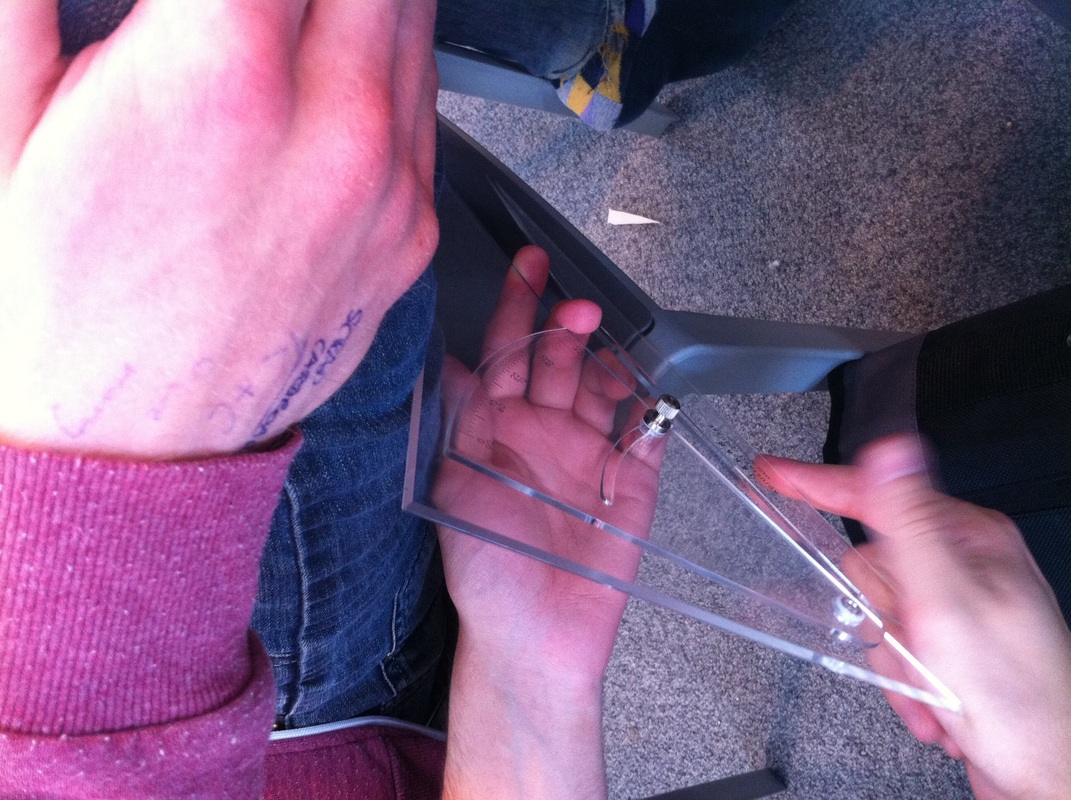

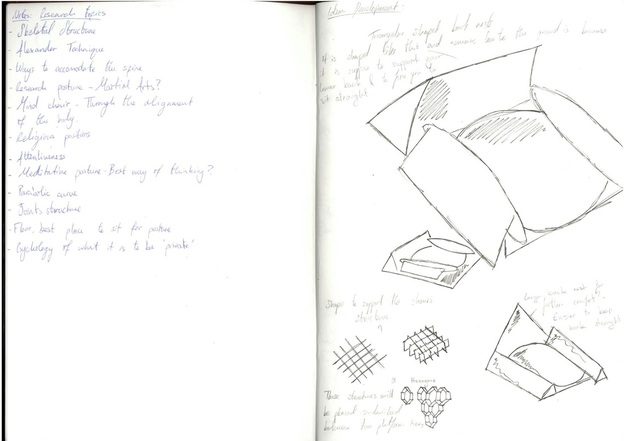
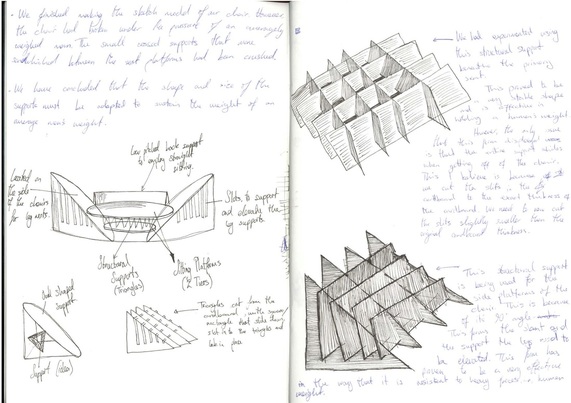
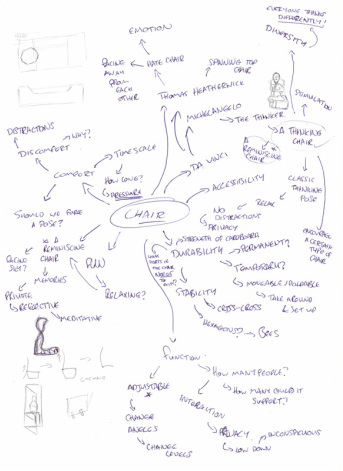
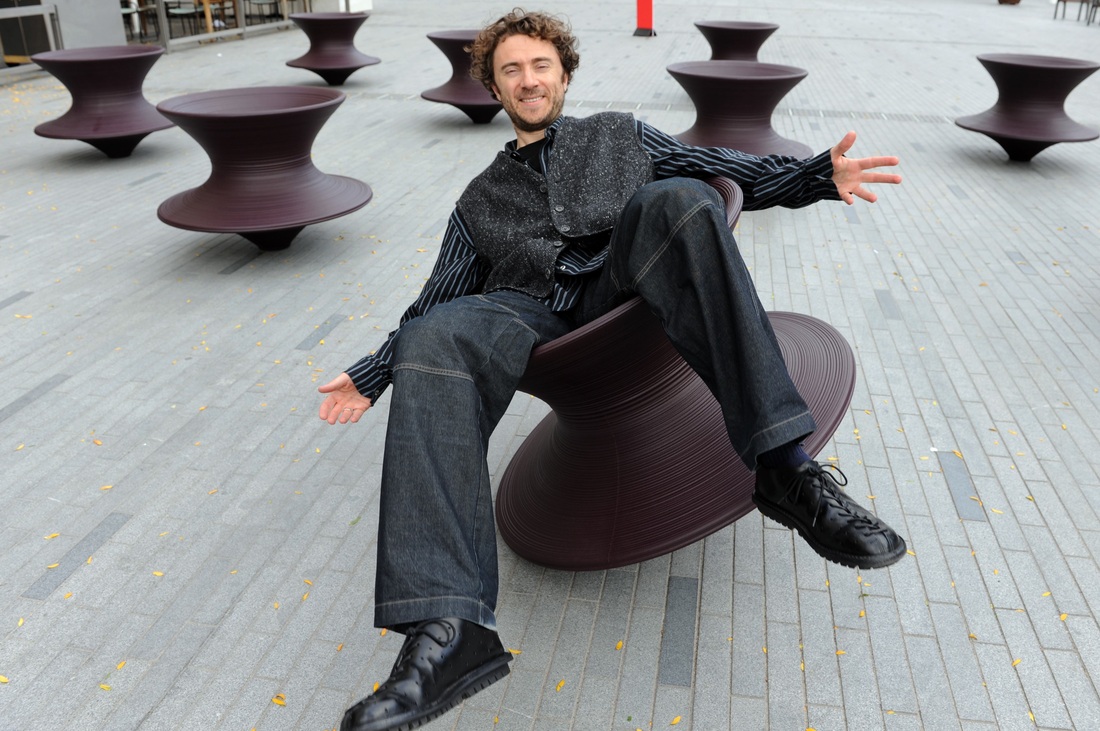
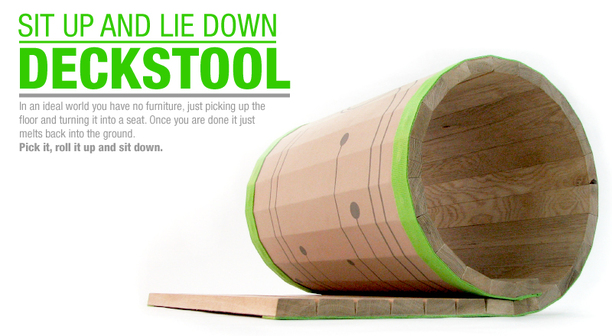
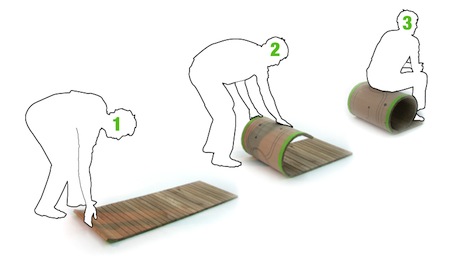
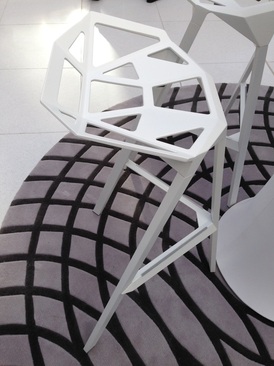
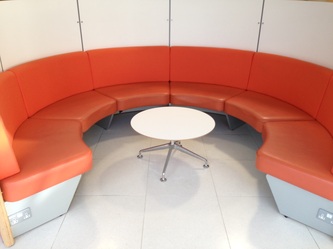
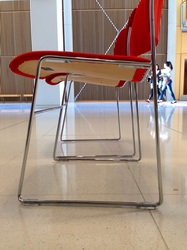
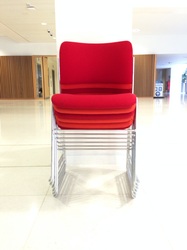
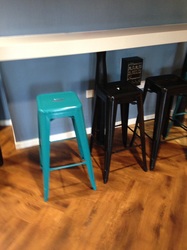
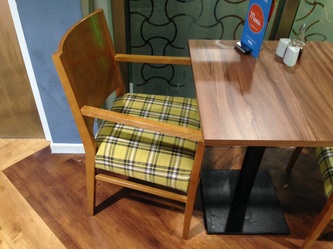
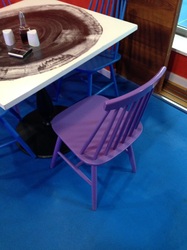
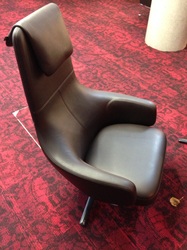
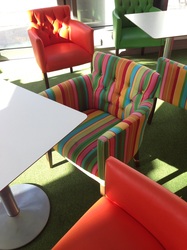
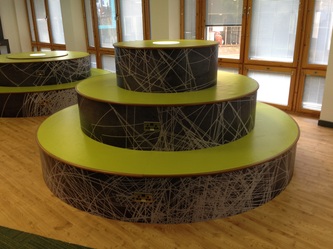
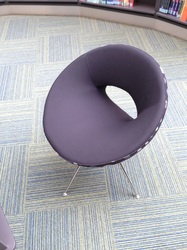
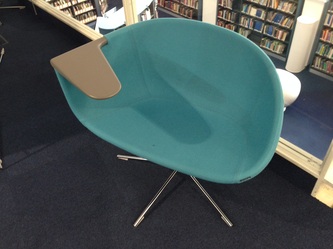
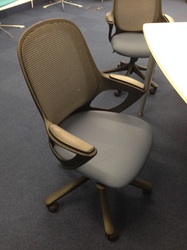
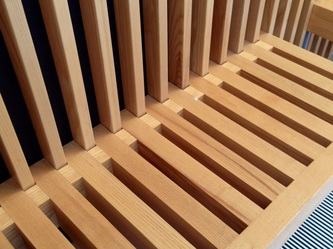
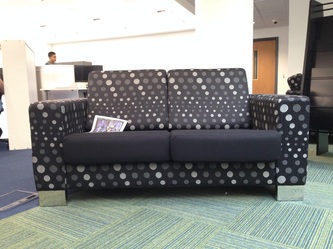
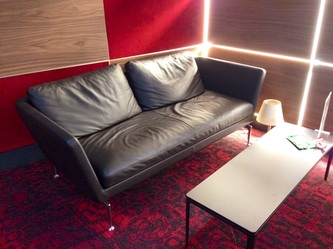
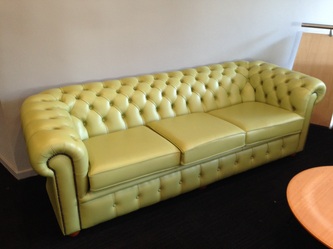
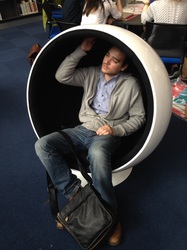
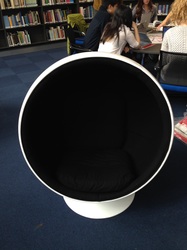
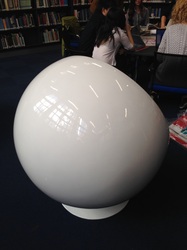


 RSS Feed
RSS Feed